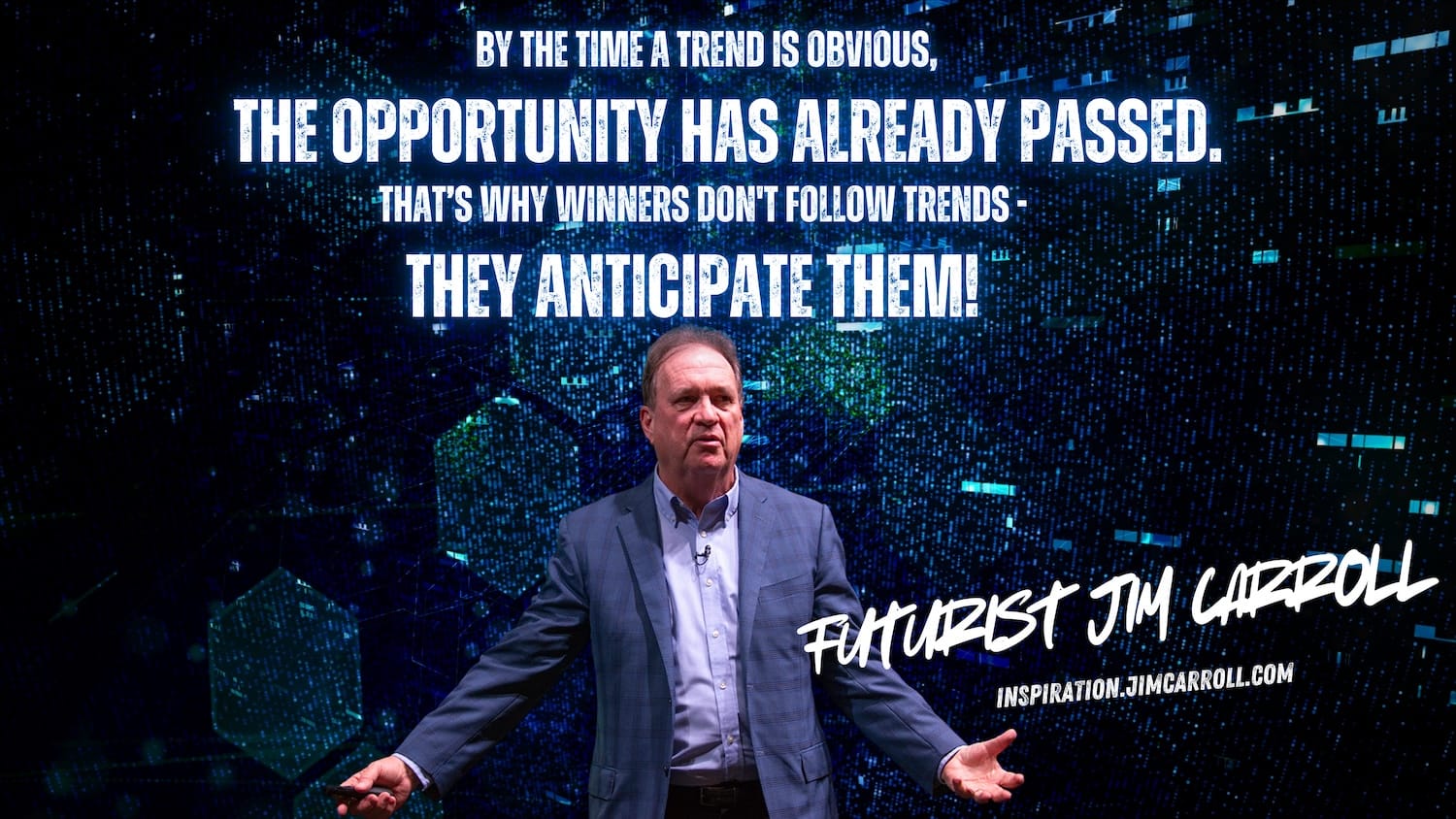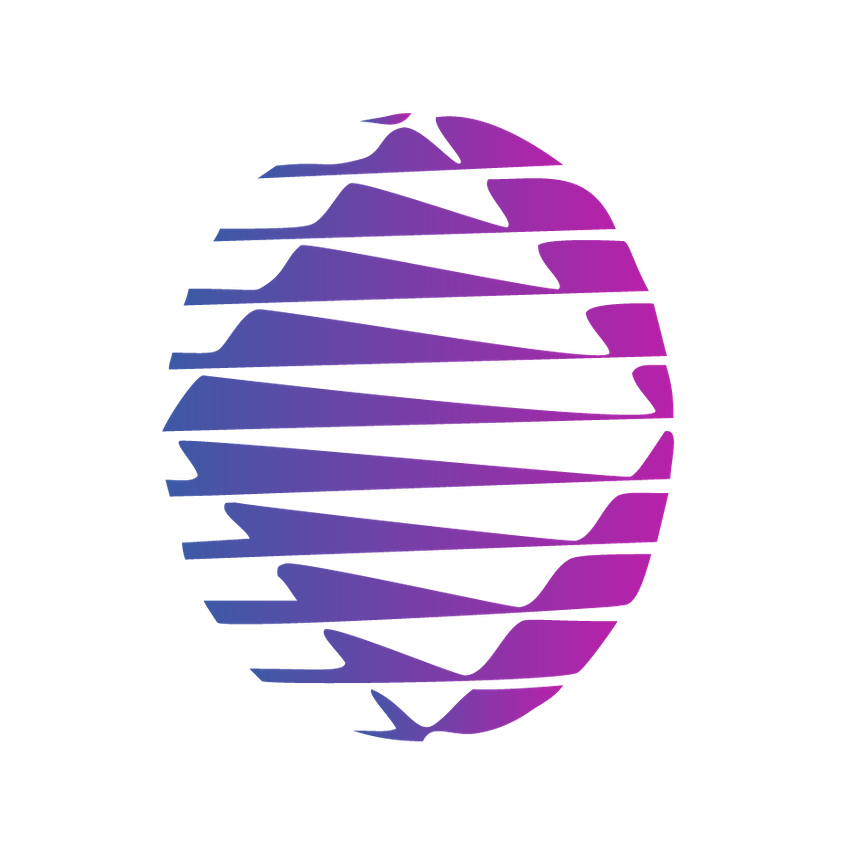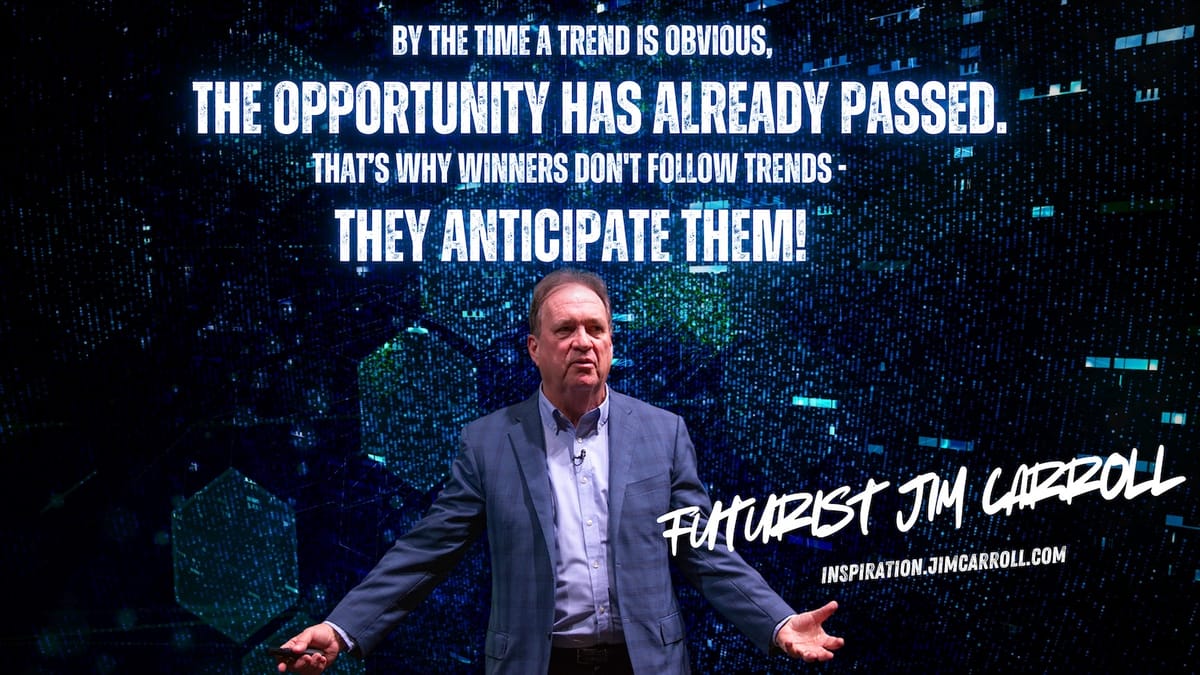"By the time a trend is obvious, the opportunity has already passed. That's why winners don't follow trends - they anticipate them!" - Futurist Jim Carroll

I’ve built a career on this one simple truth. In every boardroom and on every stage, I see two types of leaders: those who react to the future and those who create it. The first group waits for a trend to become a headline in *The Wall Street Journal* before they act. The second group is the reason it became a headline in the first place.
Think about that.
In our high-velocity world, waiting for a trend to become obvious is the same as deciding to come in last place. The reactive mindset—waiting for certainty, following the crowd, looking for a perfectly paved path—is a recipe for irrelevance. The real growth, the disruptive breakthroughs, and the market leadership all belong to the organizations and individuals who have mastered the art of anticipation.
Those who have mastered the art of understanding tomorrow before tomorrow is here.
Look, I am the first to admit that for many people, avoiding the future always seems to be the easy way out. But as I've said many times before, the future always wins in the long run. That's why making early, big, bold leaps forward is the only smart strategy - and why there is an extremely high cost of following the crowd! There is no second mover advantage! That's why following trends instead of getting ahead of them might feel safe, but it’s one of the riskiest strategies you can adopt. When you only react to what’s already established, you’re not innovating; you’re just playing catch-up.
I continue to go back to Google Gemini, where I've uploaded the manuscript for the seven books I've written since 2004, to find where I've been consistent on a particular theme. All of them contain a core theme, related overall to the theme of innovation, disruption, trends, and tomorrow. And when it comes to leading vs. following, there's a lot of there, there.
For example, this is the central lesson from my book, What I Learned From Frogs in Texas. The frogs on the road were masters of reacting to the obvious threat—the seagulls they could see! But they failed to anticipate the far bigger, more lethal threat of the cars leaving the parking lot. They were so busy managing the present that they were run over by a future they should have seen coming. (It was kind of ugly, to be honest!)
In every case, the story is the same: following the obvious trend leads you directly into a crowded, commoditized market where the ground has already been captured by the anticipators.
How do you avoid this fate? How do the winners anticipate tomorrow/ They build an effective trends radar, by which they build an organizational capability for anticipation. This involves a systematic way of looking beyond the immediate noise to see the signals of what's next.. Building this radar isn’t about having a crystal ball; it’s about changing where and how you look for insights. All of my books cover this in various ways:
- Look to the Edges, Not the Center: As I note in *Dancing in the Rain, "Trends do not begin in headlines, they begin in hacker-spaces, niche communities, small research labs, and startups". The future first reveals itself in unexpected places. Anticipation means paying attention to the experiments and offbeat ideas that are happening on the fringes of your industry.
- Listen to the Rebels: In Ready, Set, Done., I urge leaders to seek out the rebels, the "industry expatriates" who are busy tearing apart conventional business models. These are the people who see the future clearly because they’re not invested in protecting the past. Their discomfort with the status quo is a powerful signal of where the next disruption will come from.
- Observe Generational Gaps: The story of the "Plasma People vs. the Cardboard People" from Ready, Set, Done is a perfect example of this. While the established players were focused on perfecting cardboard retail displays, the next generation was already imagining a future of interactive plasma screens and RFID tags. Anticipating trends means understanding the mindset of the generation that will shape the next decade, not just the one that shaped the last.
- Invest in Experiential Capital: True anticipation comes from doing. As I outline in my mantra from Think Big, Start Small, Scale Fast!, you need to "start small" by running experiments with emerging technologies and ideas before they are mainstream. This builds your "experiential capital"—the deep, practical knowledge that allows you to "scale fast" the moment an anticipated trend hits its tipping point.
Anticipation is a discipline. It’s about building a culture of curiosity that relentlessly asks, "What's next, and how do we lead it?"
The future is never truly a surprise; it's a series of whispers that gradually become a roar. The question is, are you listening to the whispers, or are you waiting for the roar? By the time you hear the roar, you're already in the middle of the stampede.
Winners don't get caught in the stampede. They're the ones who saw which way the herd was turning and were already waiting in the next valley.
Futurist Jim Carroll regularly identifies trends well before their time!

